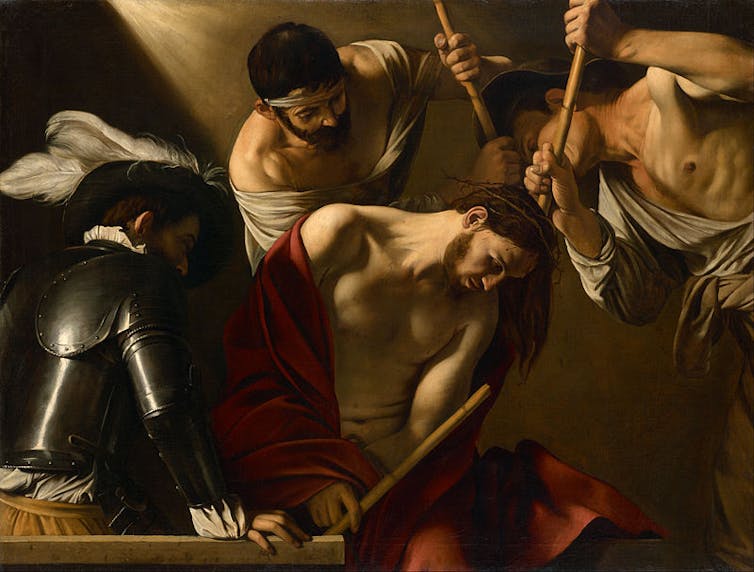Piano history: The legacy of the Labèque sisters
Katia and Marielle Labèque -- the glamorous French keyboard siblings -- have achieved a solid legacy of exuberant performances in the two-piano repertoire, ranging from experimental contemporary works to traditional classical-romantic composers. Now in their 60s, they have published the first account of their rise to stardom. Every pianist should read this book.
I first heard the Labèques three years ago in the Bordeaux Auditorium. I was sitting among the grey-haired subscription customers, most of whom who seemed befuddled, unsure what was going on. The sisters were doing their “Minimalist Dream House” show that they had taken on the road after a successful opening in Paris. The program included works by John Cage, Terry Riley, Radiohead, Arvo Pärt, Brian Eno, Philip Glass, Glenn Branca and others. Surprisingly, only five or six of the seniors walked out.
To me, it was a stunning night, with Katia dramatically bouncing on the bench, stomping her little feet, and flinging her arms and head about, the more conservative Marielle sitting stiff-backed at her facing piano, and a handful of percussionists having a field day.
The sisters’ contrasting styles both in behavior and in music-making renders them all the more interesting. These two are not twins.
After more than 45 years onstage together, the Labèques are accepted as the modern standard for two-piano performance, “a distinction that is not contested”, writes their biographer Renaud Machart in his new book Katia et Marielle Labèque : Une vie à quatre mains (Buchet et Castel). This fascinating book, a collection of question-and-answer dialogues, has not yet been translated into English but no doubt will be.
Machart, a music writer for the Paris newspaper Le Monde, describes his own change-of-heart regarding the Labèques. “I was suspicious (at first) of their glamour, their chic, their publicity, their carefully posed photos.” He found Katia’s uncontrolled gestures during performance “irritating”, in contrast to her reserved and almost somber younger sister. He once referred to them in print as “irresponsible and without interest”.
But a few years later he attended another recital and changed his mind. “These two musicians played damned well,” he recalled – “Debussy, Stravinsky, Bernstein, “all perfectly coordinated and in tune with each other”.
This video demonstrates their keyboard mastery in an excerpt from Stravinsky’s “Rite of Spring”. Katia throws herself at the music.
Machart telephoned his section editor at Le Monde and asked for space in the next edition. In his critique, he wrote that the sisters’ playing was “magnificent and touching”, noting that they “rarely look at each other (across their Steinways) but they play in the same breath and mostly from memory. The synchronization of their playing is unique.”
He sought them out after the performance and conducted a two-hour interview, at which he learned for the first time that they had spent more than ten years concentrating on contemporary music. Leaving the interview, he remembers tossing off a comment on how interesting they were. “We should record our talks and publish them book form,” he said. From that moment on, he virtually stalked them, continuing the interview in France and abroad. He caught up with them in London, Rome and Paris.
Their repertoire has broadened over the years, encompassing the baroque, classical and romantic besides a love of contemporary compositions. Dissonance and percussive playing seems to suit them. The Bartok “Sonata for Two Pianos and Percussion” is now one of their signature works.
In this video, the excitement is palpable and the contrasting styles of the two sisters is evident.
In the piano world, there is a cleavage between two-piano artists and those who play four-hand pieces on a single keyboard. Another pair of sisters, the flamboyant Khatia Buniatishvili and her sister Gvantsa have stuck with four-hand repertoire despite its harder sell in concert halls than two-piano works.
The Q and A format lends itself to this story, for it offers the sisters the opportunity to describe their difficulties and triumphs in their own words, provoked by Machart’s expert inquisition. They met together or separately, and when meetings were impossible because of their heavy performance schedule, they spoke by phone or by email. The manuscript is based then on these talks plus hundreds of messages flying around the world.
Emerging from their conversational style is a story told “perhaps undiplomatically but never in anger”. Machart concludes that the sisters remain uncomplicated, available to their fans – whether in Avignon or Tokyo – despite all their glory. “What I wanted to accomplish in these interviews was a look back at their long career, with honesty and lucidity. These spirited women still have the aura of the ‘little Labèques’, and have never lost what (the late writer and critic) Paul Léautaud called ‘the happiness of high spirits”.
_____________________________
Edited excerpts from their conversations:
BEGINNINGS
During our four years (of Paris Conservatory training) our mother traveled from Hendaye every week by train on Thursday nights, an interminable trip in second-class seating, bringing us food she bought in Spain to save money, and she returned home every Sunday evening.
It’s best to speak frankly. Conservatory professor (the late Lucette Descaves) did not leave an undying impression on us. She always arrived late and left early. Her friends would attend our classes and they chattered among themselves as we played … (Thus we had) a professor who was always distracted and who only liked boy students. Lucette Descaves never demonstrated her own playing. I never heard her play during our classes.
PERFORMANCE STYLE
Katia: Each time we play (Berio’s Concerto), I end up with bruises on my hands because of the clusters he writes. Maybe it’s quality or a defect, but when I take on something, I go all the way. Physically it’s very trying … I think I have always been like that. Of course it depends on the kind of repertoire. In contemporary music I often let myself go, but I wouldn’t do that playing Schubert’s “Fantaisie”.
I play with my entire body – my back, my shoulders, my legs, my feet. Every note is important so I am always totally involved physically. But I am never “outside the instrument” – that is a different technique, and not mine. It’s more for men than women… But I never thought that playing straight as a ramrod was the most natural way to handle the instrument either. I like to have a physical relationship with my instrument so that it becomes an extension of myself … Our way is a certain combination of my lightness and Marielle’s gravitas. For this reason, she always chooses to play the bass part. Even her voice is lower than mine!
TRAVEL
Marielle: I don’t think I could ever live in one place. I love Rome, London, and Vienna – Vienna, a marvelous city where I feel good, whether I am with Katia or accompanying my husband Semyon Bychkov, who frequently conducts the Vienna Philharmonic or the Opera.
FOUR-HANDS
Katia says in one Q and A entry: In a performance of "The Rite of Spring" by Michael Tilson Thomas and Leonard Bernstein, "there are some wrong notes – anyway it’s unplayable for four hands – but you can hear in their way of playing that these two conductor-pianists had deep understanding of the work. They both knew Stravinsky personally. They manage to create on the keyboard the feeling of the full orchestra. It’s extraordinary!”
NEIGHBORS
It’s not possible to put two Steinway Model Ds together in a tight space. And you have to soundproof the room or have no neighbors. When we lived in London in 1987 our neighbor was Dirk Bogarde who protested at the least sound, and in the most odious manner.
MESSIAEN
“Once as we were working on “Visions de l’Amen” at the Conservatory, someone poked his head around the corner – it was Olivier Messiaen… After listening to us, he said he wanted to rerecord the piece (superseding his recording of 1941). Would one of us be able to play it with his wife Yvonne Loriod? We refused, to avoid being separated, and finally Messiaen relented …” (The Labèque recording is still available in a collection of Messiaen works and it is chilling, ethereal and altogether of a supernatural beauty.)
(We place our pianos face-to-face) because we have never felt the need to see each others’ hands in order to stay together. Only Olivier Messiaen asked us to move the pianos side-by-side to record his “Visions de l’Amen” because that is how he always played it with his wife Yvonne Loriod.
LUCIANO BERIO
Marielle: I remember that when recording the “Concerto pour deux pianos” by Luciano Berio at La Scala in Milan, Luciano asked if Katia could be heard grunting. I confirmed it to him. “We must absolutely keep that in,” he said.
The drama of the Berio piece is clear in this video, although the grunting seems drowned out by the music.
INTERPRETATION
We are not the product of a “school” of piano playing. We learned everything on our own. Resisting “schools” or pianism helps build up courage and imagination. If you can do it right, you end up with your own language and you move through life more independently. What we have learned comes not from institutions or structures but from the extraordinary people we have encountered during our artistic life and with whom we have spent a lot of time – like Luciano Berio. Luciano has composed pieces for us and has become a family friend.
REPERTOIRE
With few exceptions, we have always chosen to play music that we like. It is our way of being honest and sincere. A lot of people have been willing to advise us but when we walk out on stage we are alone and we must believe deeply in the music we are playing … Romantic music is not our favorite – it doesn’t lend itself to the two-piano format. The whole problem is achieving rubato between two players, and rubato is the essence of this music – it is omnipresent in Chopin and Liszt. This is probably the reason they hardly wrote anything for two pianos. The players lose their freedom to improvise their rubato. It must be combined and fixed to always be together, and so it can become mechanical and too predictable.
POETIC BOULEZ
Pierre Boulez was always very available, very open … In fact, some might find it surprising that this composer of the two-piano piece “Structures” was always very poetic in his observations. He would say things like, “Here, it’s a bit like flowers blooming.” Or, “There, the color changes.” (Boulez’s music) was not the most obvious door-opener for a career, but we did not think in those terms... And if it gave us the image of “intellectuals” and deprived us of a vast public, too bad.
THE GERSHWIN TRAP

Few people realize that the orchestration of Rhapsody in Blue was not by Gershwin but the two-piano version was the original, written by his own hand. Certain people thought – and perhaps still think -- we had become traitors to the cause of avant-garde music, Messiaen, Boulez, Berio, Ligeti, etc. -- that we played so much when we began. It was as if we were being criticized for bringing “popular” sentiments to classical concerts. (Their recording on vinyl LPs sold more than 100,000 copies.) Our support from “intellectuals” was less and less, and certain journalists wrote less or nothing at all about us after that. Even some of our friends were sort of gritting their teeth over it. But the success opened numerous doors, and it’s still part of our repertoire that we love.
In this version, their connection with Gershwin is obvious.
For Katia and Marielle Labèque's Official Site, please click here.
To subscribe to Facts and Arts' weekly newsletter, please click here.
To follow Facts & Arts' Editor, Olli Raade, on Twitter, please click here.
If you have something to say that you want to say on Facts & Arts, please
Write to the Editor, or write a comment in the comments section.
This article is brought to you by the author who owns the copyright to the text.
Should you want to support the author’s creative work you can use the PayPal “Donate” button below.
Your donation is a transaction between you and the author. The proceeds go directly to the author’s PayPal account in full less PayPal’s commission.
Facts & Arts neither receives information about you, nor of your donation, nor does Facts & Arts receive a commission.
Facts & Arts does not pay the author, nor takes paid by the author, for the posting of the author's material on Facts & Arts. Facts & Arts finances its operations by selling advertising space.




















